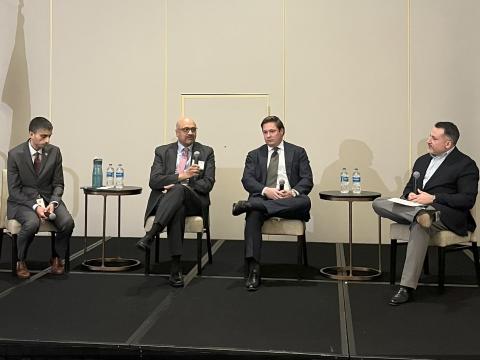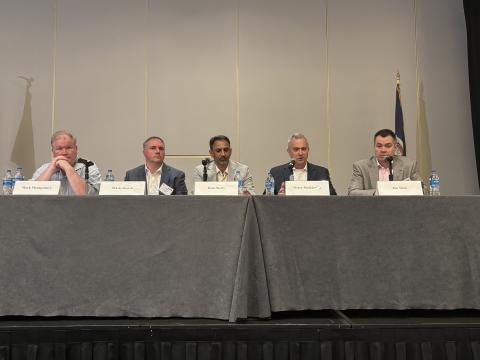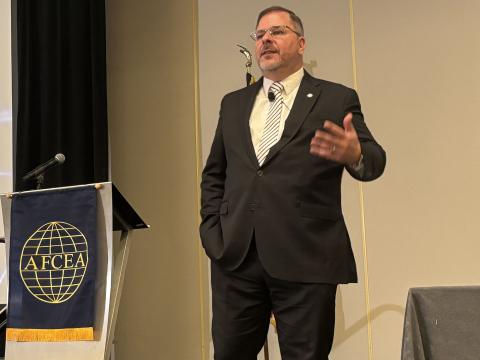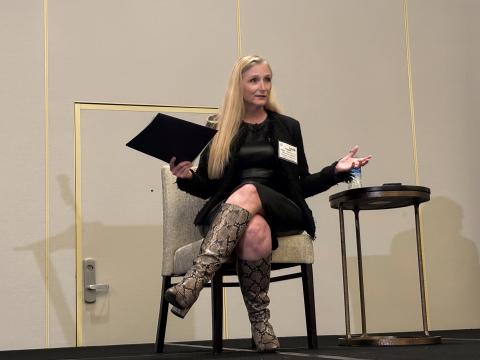With the ongoing conflicts in Iraq and Afghanistan amid the Global War on Terrorism, it is easy to become focused on the Persian Gulf and U.S. Central Command, on NATO and Europe, and on the domestic homeland security threat. However, outside of these areas lies half of the Earth’s surface, and it comprises many of the challenges present in other parts of the world.
The Asia-Pacific region includes dozens of countries and territories strewn throughout the largest ocean on the planet. Playing a key role in security all through that region is the U.S. Pacific Command, or PACOM. It is important to remember that it is the largest of the U.S. combatant commands and that all is not well in that part of the world.
PACOM’s area of responsibility covers more than 50 percent of the Earth’s surface and houses nearly 60 percent of the world’s population. The world’s six largest armed forces—the People’s Republic of China, United States, Russia, India, North Korea, Republic of Korea—are all present in this theater.
The Pacific region is also a complex theater from the standpoint of international relations and coalitions. Unlike Europe, where NATO has served for many years as an institutional framework for an allied coalition now grown to embrace 26 nations, the Pacific theater lacks an all-encompassing security organization. Instead, a complex set of treaties underpins much of PACOM’s security efforts. Five of the seven U.S. mutual defense treaties are in the Pacific. They include the United States and the Republic of the Philippines (mutual defense treaty, 1952); Australia, New Zealand and the United States (ANZUS, 1952); United States and Republic of Korea (mutual defense treaty, 1954); the United States, France, Australia, New Zealand, Thailand and the Philippines (South East Asia Collective Defense, 1955); and United States and Japan (mutual defense treaty, 1960). With continuous changes in threats and international politics, maintaining these relationships is a challenge. Yet they have served to ensure peace and promote prosperity throughout the years.
PACOM is a robust unified command that includes approximately 300,000 military personnel from the service components: U.S. Army, Pacific; Marine Forces Pacific; U.S. Pacific Fleet; and U.S. Pacific Air Forces. Subordinate unified commands include U.S. Forces, Pacific; U.S. Forces, Korea; Eighth U.S. Army; Special Operations Command Pacific; and Alaskan Command. Several standing joint task forces and additional supporting units join them. Some of these organizations are forward deployed throughout the Pacific Rim, some are forward based, and some remain in the continental United States ready to engage when needed.
Given the complexity of the Pacific theater, the U.S. force structure, dynamic coalition relationships and distance, communications and command and control are extremely difficult. More than 1,500 exercises are held in the Pacific every year to validate communications and command and control plans and to train commanders and staffs on the complex issues in this area. The range of threats and missions makes this training difficult and necessary, and the challenges that face the region are no less vexing than those that face other commands.
Significant terrorist activity continues to plague the Asia-Pacific region, particularly in the Philippines and Indonesia. PACOM has participated in more than 20 disaster relief operations in 12 countries and one U.S. territory since 1996. And, of course, the potential for a major regional conflict always exists, for which the force structure must be trained and prepared.
Over the years, PACOM, because of its challenging environment, has been host to many testbeds for new technologies and processes. The conventional wisdom was that “if it would work in Pacific Command, it would work anywhere.” As an example, the Global Command and Control System (GCCS) was fielded and tested in the Pacific as the Theater Command and Control System before it was deemed ready for global application. In that case, it was Marine Forces Pacific that served as the Joint Task Force headquarters for testing of GCCS.
Communications always have been particularly challenging in the Pacific. The distances involved, most over water, have required innovative solutions over the years. And, it truly has been a joint effort. The result has been the most diverse and robust military communications in the world.
Information exchange in the Pacific coalition environment has given birth to solutions to meet theater engagement and coalition warfare requirements. The Asia-Pacific Area Network (APAN) was developed in the 1990s to allow cost-effective means of information exchange with governments throughout the Pacific Rim. Classified and unclassified foreign releasability requirements in the Pacific led to development of one of the early multilevel secure server environments for use across the theater.
PACOM is a command rife with challenges, capabilities and opportunities among its military component commands, the subordinate unified commands and the other support units from throughout the Pacific region. It is a rich and varied environment, and one to which we must pay more attention.




Comments